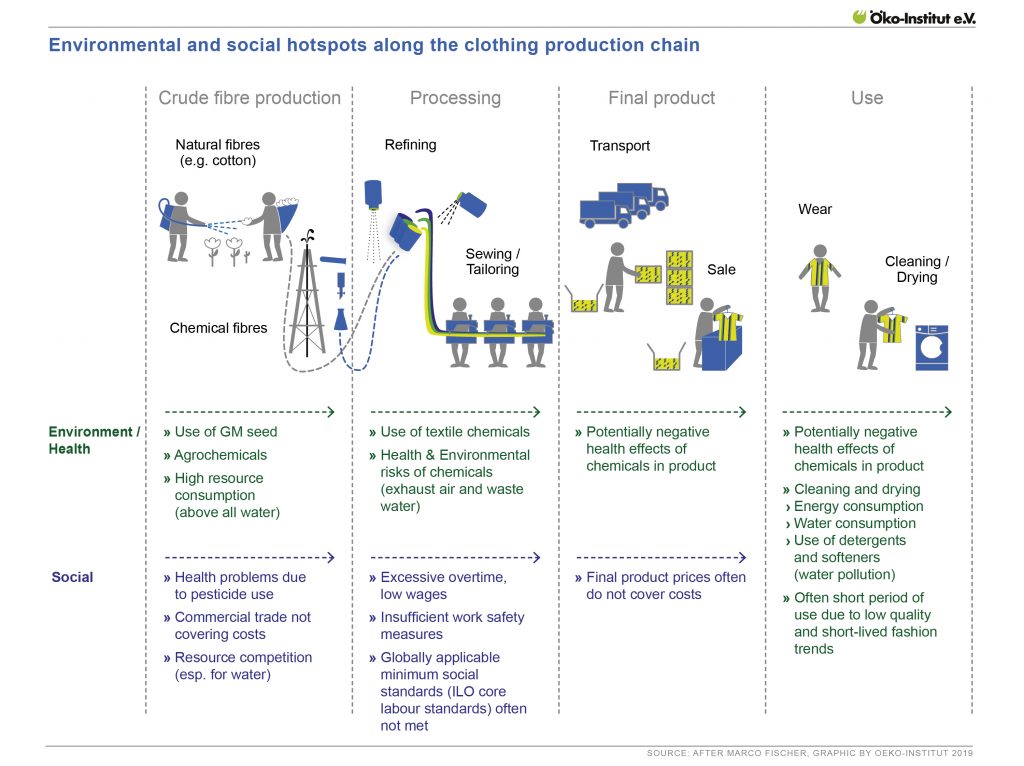Sustainable clothing? It suits me! [eng]

Now a shirt, now a pair of jeans, then a jacket: on average the Germans get through around 20 kilogrammes of clothes per head each year. The textiles sector makes it easy for us by mass-producing affordable fashion. Unsold clothes are pulped and processed into lining wallpaper or cleaning cloths. In this way valuable resources and labour are entirely wasted, leaving aside the fact that half the textiles produced globally would already be enough for everyone.
Our consumer choices affect other parts of the world
Mass production has an enormous impact on the health and environment of the people living in the producing countries. For example, substantial quantities of plant protection products and fertiliser are used in conventional cotton growing. These pollute water bodies and soils and pose a threat to animals and plants. The irrigation systems installed do not use valuable water resources sustainably; water is in any case in short supply in many growing regions. In addition, large fields, monoculture and genetically modified cotton cause massive interference to biological diversity.

The use of chemicals that are hazardous to health and the environment in the manufacture of fabrics has devastating consequences in the countries where textiles are produced. Moreover, inadequate safety precautions threaten the health and – as in the 2013 Rana Plaza disaster in Bangladesh, for example – the lives of the workers in the garment factories and sewing shops.
What is cheap and what is expensive?
The reason sustainable fashion often seems too expensive is that, by comparison, conventional mass-produced fashion is marketed too cheaply. However, these bargain prices are just not compatible with ensuring minimum social standards. At the same time, high prices do not guarantee that an item of clothing has been made from organic materials, so it is possible that, in the case of a brand-name sports top costing 140 euros, the seamstress in El Salvador is paid only a few cents of the retail price.
Our responsibility for a decent future
It is all the more important to look at certified sustainability labels such as Blue Angel, bluesign® or GOTS. They assess environmental and social standards along the entire textiles production chain. All recommended ecolabels are also listed on the online portal Siegelklarheit.de. And we, personally, make sure to have fewer new outfits, and instead buy high-quality sustainable clothes that last and so protect the environment and save resources.
Alexa Hännicke is a geoecologist and science journalist based at the Darmstadt office and working in the Public Relations & Communications team.
Dr Jenny Teufel is a Senior Researcher in the Sustainable Products & Material Flows division, working in Freiburg on various issues relating to sustainable procurement and the evaluation and labelling of sustainable products.
